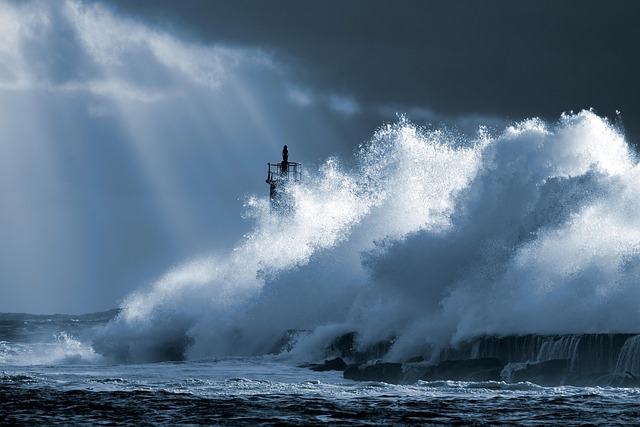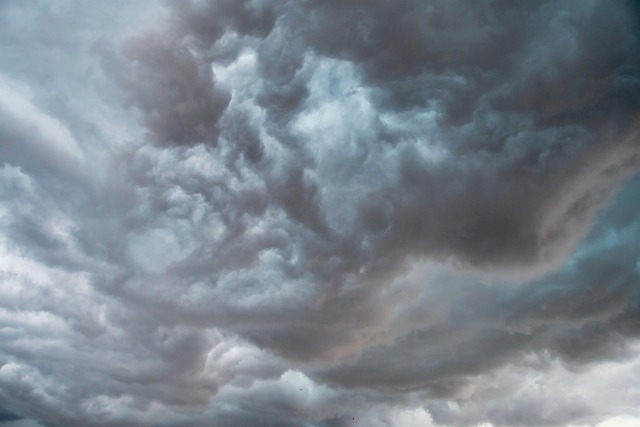Key takeaways at a glance
-
Strongest UK gusts: widely 50–70 mph; peaks in exposed parts of Scotland nudging the 95–100 mph zone, with severe crosswinds across northern corridors. The Guardian+1
-
Power outages: Tens of thousands without electricity in Scotland and Northern Ireland this morning; local operators reported ~62,000 still off-supply across northern Scotland at one point, with welfare support deployed. In Ireland, 200k+ lost power. Inverness Courier+2AP News+2
-
Casualty: Police in Ireland confirmed a weather-related fatality in Letterkenny, Co Donegal. Sky News+1
-
Travel: Rail services curtailed across Scotland; ferries and some flights affected; roads blocked by fallen trees and debris. Royal Parks in London closed during peak winds. The Scottish Sun+2The Guardian+2
-
Active warnings: Amber wind across northern Scotland into Saturday night; widespread yellow wind/rain warnings across much of the UK. ITVX+2Met Office+2
-
Energy market note: Extremely windy conditions drove hours of negative wholesale power prices as wind output surged. Financial Times
The last 24 hours: how Storm Amy unfolded

Storm Amy — the first named storm of the 2025/26 season — was named on Wednesday 1 October as models locked on to a rapidly deepening low tracking into the UK and Ireland. By Friday afternoon (3 Oct), the Met Office escalated to amber wind for parts of northern Scotland and widespread yellow warnings elsewhere, flagging a high risk of flying debris, power interruptions and transport disruption. Met Office+1
Overnight into Saturday (4 Oct), Amy delivered the core wind field. Peak gusts in exposed locations of Scotland pushed well into the 90s mph, with widespread 50–70 mph inland gusts across Northern Ireland, northern England, Wales and parts of central/southern England. Agencies reported downed trees, blocked roads, fencing and roof damage. The Guardian
By Saturday morning, DNOs (distribution network operators) were battling large-area power cuts: SSEN (north of Scotland) cited ~62,000 customers still off at one stage and launched a “comprehensive welfare operation” with hot-food vans for affected communities. NIE Networks/regional coverage indicated tens of thousands off overnight in Northern Ireland, improving gradually through the day. Inverness Courier+1
Across the capital, London’s Royal Parks (including Hyde Park and Regent’s Park) closed during the worst of the winds to reduce risk from branches and debris. The Guardian
Meanwhile, grid conditions flipped to long runs of negative wholesale electricity prices on Saturday as wind output surged toward 20 GW, underscoring both the scale of the storm and the constraints on moving Scottish wind to demand centres further south. Financial Times
UK regional impacts (Fri PM → Sat PM)

Scotland (amber focus)
-
Winds: Exposed western/northern coasts and higher routes saw very severe gusts, pushing the upper 90 mph range. Crosswinds made bridges and high-level corridors hazardous. The Guardian
-
Power: SSEN reported ~62k still off-supply at one point; cumulative interruptions stretched well beyond that through the night as faults cycled. Restorations are rolling but some areas face multi-day repairs given the severity and access limits. Inverness Courier+1
-
Transport: ScotRail cancellations, fallen trees on lines, and flight/ferry knock-ons. Roads in the Highlands/Islands reported blockages and debris through Saturday morning. The Scottish Sun
-
Warnings: Amber wind in the north through 21:00 BST Saturday 4 Oct, with yellow wind/rain broader across the country. ITVX
Northern Ireland
-
Winds: Widespread 50–70 mph gusts with higher at exposed sites; instances of structural/arboreal damage. The Guardian
-
Power: ~65k customers impacted overnight at peak; ~22k still off by late morning Saturday, with stepwise restoration underway. ITVX
-
Travel: Rail services curtailed; debris and local flooding hampered roads. ITVX
-
Warnings: Amber/yellow through Saturday; conditions easing later but still blustery. ITVX
North of England
-
Winds: Widely 50–60 mph with pockets higher on coasts and high routes; trees/branches down and spot power interruptions. YouTube
-
Rail/roads: Fallen trees and debris produced localised delays; operators implemented temporary speed restrictions in exposed sections. The Guardian
-
Warnings: Yellow wind extended through Saturday; showers at times, feeling markedly cooler in the wind. ITVX
Wales & Midlands
-
Winds: Gales/severe gales in exposed west and higher ground; 50–60 mph gusts, easing gradually later Saturday. YouTube
-
Impacts: Scattered fallen branches, local power flickers, and bridge restrictions during higher gust windows. ITVX
South & London
-
Winds: Lower-end impacts compared with the north, but still notably gusty; Royal Parks closures and precautionary venue changes noted. The Guardian
-
Air/rail: Some knock-on delays from northern disruption; local debris management across streets and green spaces. The Guardian
Travel disruption: rail, road, sea and air
-
Rail (particularly Scotland): Multiple routes suspended or curtailed during the overnight/early-morning peak; trees/obstructions on lines required patrols and clearance, with services ramping back cautiously as winds ease. Expect short-notice cancellations and speed restrictions where lines remain exposed. The Scottish Sun
-
Roads: Numerous reports of fallen trees, fencing and roof materials. Drivers of high-sided vehicles faced significant crosswind risks on exposed bridges and high routes; police advised against non-essential travel in the worst-affected areas. PA Media
-
Ferries: Western Isles and northern routes saw suspensions and alterations. Check operator updates before travel. The Scottish Sun
-
Air: Loganair and other carriers reported cancellations/delays, notably at Glasgow and Edinburgh during peak winds. The Scottish Sun
Power cuts and energy: where the lights went out — and why prices went negative
-
Scotland: SSEN confirmed tens of thousands off overnight; ~62,000 off-supply still showing at a Saturday-morning update, triggering a welfare operation (food vans, resilience partners). SP Energy Networks issued repeated preparedness advice. Restoration work is weather-dependent because working at height in amber-level gusts can be unsafe. Inverness Courier+1
-
Northern Ireland: Regional updates pointed to a ~65,000 peak interruption across the network, with ~22,000 still off around late morning, improving through the afternoon. ITVX
-
Republic of Ireland: 200,000+ lost power at the height of the storm. ABC News
-
Wholesale energy: The same winds that brought damage also super-charged wind generation, pushing many hours of negative wholesale prices on Saturday as wind output approached ~20 GW. Grid constraints (especially north–south transfer) can force curtailment even in very windy conditions, which is why negative prices don’t necessarily mean free electricity for households. Financial Times
Confirmed casualty and safety posture
Police in Ireland confirmed that a man in his 40s died in Letterkenny, Co Donegal, in a weather-related incident during Storm Amy’s peak. Authorities across the UK and Ireland urged the public to avoid coastline areas, beware flying debris, and defer non-essential travel while amber conditions persisted. Sky News+1
Official warnings (Saturday 4 Oct)
-
Amber wind warning: Northern Scotland (life- and injury-risk from flying debris; potential structural damage; road/bridge restrictions) — in force until 21:00 BST Sat. ITVX
-
Yellow wind warnings: Extended across Scotland, Northern Ireland, north England and north Wales, with further yellow coverage over rest of England & Wales to early evening. Yellow rain in north/west Scotland and Northern Ireland at times. ITVX+1
The Met Office named Storm Amy on 1 October as the first storm of the 2025/26 season; it trended as a classic early-October deep low bringing a vigorous wind field and squally rain bands. Met Office
Timeline: the last 24 hours, hour-by-hour highlights
Friday 3 Oct (late afternoon–evening):
-
Amber/yellow warnings tightened ahead of landfall phase. Ferry operators began pre-emptive cancellations; rail readied for overnight line patrols. Met Office
Overnight into early Saturday:
-
Core wind field crossed Scotland and the North, with severe gusts in exposed coastal/high routes. Widespread power interruptions began, particularly north of the Great Glen and along western/semi-exposed corridors. Rail lines reported fallen trees/debris; roads saw multiple closures. Inverness Courier+1
Saturday morning:
-
Royal Parks closed in London as a safety measure. ~62k customers still off in northern Scotland; ~22k still off in Northern Ireland. Rail/ferry/air operators issued rolling updates on suspensions and reduced timetables. The Guardian+2Inverness Courier+2
Saturday midday–afternoon:
-
Amber remains live in northern Scotland. Winds ease gradually elsewhere but stay gusty; clean-up begins where safe. Negative power prices persist for long stretches amid very high wind generation. ITVX+1
What to do now: practical guidance for households, drivers and commuters
If you’re without power (Scotland / NI hotspots):
-
Report the outage via your DNO (SSEN, SP Energy Networks, NI’s NIE Networks). Don’t assume neighbours already did. Keep phones charging in the car if safe. Use battery lights, not candles. Follow DNO social channels for welfare-van locations and estimated restoration times. Inverness Courier+1
-
Food safety: Keep fridge/freezer closed; most freezers hold temp for ~48 hours if unopened.
-
Medical equipment: If you depend on powered medical devices, call your provider/DNO Priority Services Register.
If you must travel:
-
Check rail operator feeds (ScotRail, Translink, Avanti, etc.) and ferry operators before leaving. Expect speed restrictions and short-notice changes. Drive with care, especially under trees and on exposed bridges. The Scottish Sun
-
Watch for standing water behind blocked drains; avoid flood water — even 30 cm can float a car.
Around homes and workplaces:
-
Stay clear of damaged roofs, loose cladding, unstable fences. Photograph damage for insurance once winds ease and it’s safe.
-
Be vigilant with BBQs/heaters in power cuts — risk of CO poisoning indoors.
Why did Storm Amy hit so hard?
Early-season (October) Atlantic lows can deepen rapidly as thermal contrasts sharpen. Amy’s track placed the tightest pressure gradient over north and west Scotland, aligning core winds with orographic acceleration on coasts and high routes; strong sting-jet-like bursts can locally spike gusts well above the general gradient. The Met Office highlighted Amy as first storm of the season and signalled the potential for significant transport and power disruption days in advance. Met Office+1
On the power side, the same meteorology drove massive wind generation, contributing to record-length negative wholesale price windows on Saturday — a reminder of both the UK’s renewable strength and the grid bottlenecks (notably moving Scottish wind south). Financial Times
What’s next? (Short-range outlook)
As we head through Saturday night into Sunday, the amber zone shrinks and winds ease, but blustery/showery conditions persist, especially in the north and west, with cooler air filtering in behind Amy. Always check the Met Office app/site for updated warnings before making plans. Met Office
Frequently asked questions (FAQ)
Q1) Is Storm Amy over?
A: The worst winds have peaked in many areas south of the amber zone, but northern Scotland remains under amber until 21:00 BST Saturday. Expect lingering blustery/showery weather into Sunday. ITVX
Q2) Why did London parks close if the storm mainly hit the north?
A: While the strongest gusts targeted Scotland/NI, southern England still saw hazardous gusts and tree-risk in busy green spaces, so Royal Parks temporarily closed as a precaution. The Guardian
Q3) How many people lost power?
A: At various points overnight and into Saturday, Scotland and NI saw tens of thousands off-supply; SSEN cited ~62,000 still off in the north of Scotland at one update; NI peaked around ~65,000 with ~22,000 off late morning. In the Republic of Ireland, 200,000+ were affected. Numbers change as repairs progress. Inverness Courier+2ITVX+2
Q4) Why were electricity prices negative if people lost power?
A: Negative wholesale prices reflect system-level oversupply, not the experience at your home. High wind output can exceed demand/transfer capacity; constraints and curtailment push wholesale prices negative, but retail bills stay fixed. Financial Times
Q5) Will there be more named storms soon?
A: The UK Storm Centre list for 2025/26 starts with Amy; more names follow as criteria are met (impacts expected). It’s too early to say which low will be named next, so watch Met Office channels. Met Office